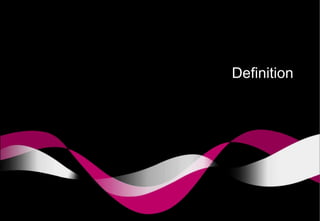Customer experience management (cem)
- 2. Definition
- 3. What is CEM? • CRM methods, processes and technology reduced service and operation costs. OK for companies, not necessarily for customers Customers expect increasingly more from the companies they do business with Loyalty is driven primarily by company’s interactions with its customers • • Client Experience Management “The process of strategically managing a customer’s entire experience with a product or company”
- 4. Client Experience Management At the end, the goal of Customer Experience Management is to move customers from satisfied to loyal.
- 6. • "Customer relationship management (CRM) is a model for managing a company’s interactions with current and future customers. It involves using technology to organize, automate, and synchronize sales, marketing, customer service, and technical support." Whereas • “Client experience management (CEM) is the collection of processes a company uses to track, oversee and organize every interaction between a customer and the organization throughout the customer life cycle.”
- 7. CEM vs CRM While CRM strategies and solutions are designed to focus on product, price and enterprise process, with minimal focus on customer need and desire, CEM takes into account also customer expectations and the value of customer’s perceived sentiment. CEM is a strategy that focuses the operations and processes of a business around the needs of the individual customer, involving strategy, integration of technology, orchestrating business models and brand management. “CRM comes after the experience and CEM works hard on anticipating it.”
- 9. Blueprint of CEM solutions COLLECT DATA FROM CFS, FRONT LINE FEEDBACK, VOC & INTERNAL/EXTERNAL AUDITS MANIPULATE AND CORRELATE INFORMATION PROVIDE REPORTING AND ANALISYS CAPABILITIES
- 10. A possible architectural approach…. Approach to CEM • Switch the focus from a ‘products&services’view both to management and analysis of all the aspects involved into the customer interaction • Collect real-time customer centric transactional data from many available and relevant network data sources • Build a consistent set of Customer Experience Indicators (CEIs)/ MOT’s and make them available in order to integrate common KPIs information • Provide a wide desktop view of the collected data at different aggregation degrees, from single customer to market segment • Prevent the loss of information about customer related issues through a highly effective and efficient IT Team
- 11. Links in the Service – Profit Chain External Service Value Employee Retention Employee Productivity Profits Revenue Growth Customer Satisfaction Customer LoyaltyEmployee Satisfaction Internal Service Quality Operating strategy and service delivery systems Organisational context: Culture, Leadership, Teamwork Service concept Business results Service designed and delivered to meet targeted customer needs Retention Loyalty Advocacy Performance Equations helps organisations develop capability to deliver service excellence
- 12. Customer Experience: It Takes More than Good Customer Service If you take all the different aspects of a commoditised world then everything is pretty similar: similar products, similar people, similar technology & similar pricing. The differences are in the brand, the perception and the feel of a company, all of which are delivered through the customer experience. It’s the customer experience that differentiates a company
- 13. How to Add Value? Design measurable approaches to attitudinal and behavioural change that: Align behaviour and skills with the brand values and customer experience promise you to communicate to your market Address the attitudes and motivation that shape behaviour Equip your employees to deliver the experience you know your target customers value Develop your leaders to support employees in delivering on your brand values and customer experience promise – including tools to sustain the change Positively impact customer loyalty where employee behaviour is most critical Measure the incremental changes that define success
- 14. Keys to Service Excellence through Client Experience Management Service Excellence Engagement Service Excellence Engagement
- 15. •Identify important retention factors •Apply tactics to increase retention and commitment •Establish customer experience Vision & Strategy •Launch leadership and management education & development programme •Launch employee engagement programme •Gather data on customer experience •Use CFS to identify, organise and communicate expectations •Identify and map emotional touch points • Teach and model service and Service Recovery skills • Provide reinforcing and developmental feedback • Conduct coaching conversations to build ownership and judgment Keys to Service Excellence through Client Experience Management Service Excellence Engagement Service Excellence Engagement
- 16. Our Solution: The People and the Steps Frontline Employees Frontline Managers Mid-level Managers Executive Team 1. Measure 2. Engage 3. Mobilise 4. Sustain The People The Steps
- 17. Thanks
Editor's Notes
- @Training Dept. 2014
- @Training Dept. 2014

















